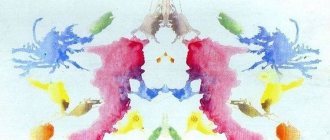Uncontrollable aggressiveness or uncontrollable aggression can be directed “ outward.
“, manifesting itself in the form of curses, fights with bodily harm to surrounding people or destruction of things (furniture, dishes, vehicles, etc.).
Attacks of aggressive behavior directed at oneself
“: self-accusations are expressed, self-harm is caused.
During severe attacks of aggression, the clarity of consciousness may change: during periods of overexcitation, memory may be switched off, the ability to realize what is happening and assess the consequences of one’s behavior may be lost.
What is aggression
We encounter aggression at almost every step: aggressive and rude people in transport or a store, “clashes” at school or work. If we ourselves are not participants in situations, then we become unwitting witnesses.
Why do people show aggression? They are protecting themselves. Z. Freud believed that a person destroys everything around him in order not to destroy himself. That is, the causes of aggression are internal in nature, but first things first.
Aggression is any form of behavior aimed at insulting or harming another living being who does not want such treatment. Aggression is a form of deviant destructive behavior with pronounced emotional overtones. In aggressive behavior, a person is motivated to cause harm (mental or physical) or capture another person(s).
In psychology, there are several approaches to studying the problem of aggression:
- Aggression is based on natural, innate instincts.
- Aggressive behavior becomes under the influence of biological factors (hormones and mental disorders).
- Aggression is stimulated by external motives of the individual (social factors, environmental influences).
- Aggression is the result of a person’s learning through someone else’s and one’s own experience and example.
- The basis of aggression is the complex interaction of cognitive processes (memory, attention, feelings, logic, imagination, etc.) and a person’s previous experience.
In animals, aggression is a defensive reaction. The same fundamentals are noted in human psychology. Aggression is a sign of weakness, uncertainty, and defenselessness.
Without training and socialization of a person, aggression remains an animal instinct. Why can we conclude that it is characteristic of immature, maladaptive individuals.
Aggression begins with irritation, which comes when we feel that someone has encroached on our safety, personal space, physical or mental “I”.
Causes of aggressiveness
The development of aggressiveness as a personality trait is a complex process in which many factors are involved. Hostile behavior is formed gradually under the influence of family, peers, and the media. Children learn aggression through observation and testing: they see how hatred and hostility can be shown, evaluate what this leads to, and put the acquired knowledge into practice. If the experience of aggressive actions is positive, they become embedded in the character. The causes of aggressiveness in an adult are socio-psychological factors, mental illness, and states of alcohol and drug intoxication.
Psychosocial factors
Productive hostility allows you to achieve your goals, defend personal boundaries, and your own beliefs. It is opposed to the spinelessness inherent in most people. The severity and frequency of aggressiveness depend on individual characteristics, such as temperament and character, as well as on sociocultural conditions and random situational influences. Psychosocial causes are divided into several groups:
- Situational.
Aggression is provoked by irritating external conditions and physiological states. Thus, people become more hot-tempered when they overheat, are in a stuffy room, or are exposed to noise or vibration for a long time. Self-control weakens in situations of stress, fatigue, pain, and sexual arousal. - Behavioral.
This group of factors includes any behavior that is regarded by others as unacceptable and causes a defensive response. For example, a child’s aggressiveness can be associated with aimless pastime, skipping classes, drinking alcohol - actions that cause condemnation from parents and teachers. - Personal.
People with sanguine and choleric temperament, with excitable and antisocial character traits are more likely to be aggressive. Hostile behavior is realized on the basis of emotional instability, irritability, and depression. Other personal reasons are an inadequate level of self-esteem, willingness to take risks, and envy. - Microsocial.
The microsocial environment is the family, school or work community. People who often observe violence or experience it themselves, and experience humiliation and insults are prone to demonstrating aggression. Therefore, a high level of hostility is determined among adolescents from disadvantaged families and among people working in law enforcement agencies. - Macrosocial.
Social, political and cultural factors can be considered as causes of aggression. A hostile mood is formed by the propaganda of negative events in the media, the demonstration of non-normative behavior by significant people (the leader of the country, ministers), and the elevation of violence to a cult. The provoking factor is often low socio-economic status and dependence on financial assistance from the state.
Mental disorders
Aggression is a fairly common behavioral and emotional phenomenon encountered in the practice of psychiatrists. Research and public interest in the problem of aggression in mental patients is associated with a high risk of them committing dangerous actions that are directed at loved ones, random people, or themselves. Bitterness, anger, and impulsivity are most characteristic of the following disorders:
- Depression.
In depressed patients, aggression is often intrapunitive - directed at oneself. It manifests itself in self-deprecation, feelings of worthlessness, and guilt. The combination of severe depression and impulsiveness increases the risk of suicide attempts and self-harm. In relation to other people, aggression is realized through irritability, suspicion, and negativism. - Dementia.
Dementia patients lose self-control and do not take into account the rules of behavior accepted in society. They can insult and harm others without realizing the gravity of their actions. Aggression is often caused by fear, the inability to perform usual actions, loss of independence, and in severe cases, physical discomfort (hunger, fatigue) and the inability to ask for help. - Schizophrenia.
The leading causes of hostility in patients are delusional ideas about the evil intent of others, inadequacy of emotions, and disinhibition of drives. At the same time, they have no intention of harming another. Behavior is often based on distorted logic, aimed at getting rid of tension and fears. In the paranoid form of schizophrenia, patients can cause harm by complying with the demands of hallucinatory images or voices. - Psychopathy.
In psychiatric practice, personality disorders are a common cause of aggression. With explosive psychopathy, patients are prone to uncontrollable outbursts of anger and impulsive unintentional aggression. Key manifestations of epileptoid personality disorder are emotional viscosity, vindictiveness, and anger. Patients remain irritated for a long time, show selfishness, neglecting the interests of others. People with antisocial psychopathy have moral defects, do not experience respect, sympathy and love, and therefore show aggression without a sense of guilt.
Intoxication
Taking psychoactive substances reduces clarity of consciousness, impairs cognitive functions, and distorts perception. In a state of intoxication, behavior and emotions become inadequate: laughter, crying, anger, and fear arise for no reason. All these changes are due to the pharmacological effect of the drug taken (alcohol, drug) and the physiological characteristics of the body. After discontinuation of the substance, the condition gradually normalizes. Aggression can be triggered by the following substances:
- Alcohol.
At the initial stage of intoxication, euphoria, a feeling of relaxation and lightness prevails. Then alcohol intoxication intensifies, behavior becomes defiant, and self-control decreases. Irritability, rudeness, and importunity increase. The person behaves aggressively, provokes conflicts, scandals, and fights. During this period, he becomes the most dangerous for himself and the people who are nearby. - Cannabis preparations.
With a small dose of the drug, there is a feeling of carelessness, lack of restraint, and increased talkativeness. Sensitivity to light, sounds, and smells increases. Increasing the dose leads to inhibition and lethargy or, conversely, to aggressiveness and unmotivated actions. In the second case, hyperactivity increases, hallucinations, groundless fears, and panic appear. - Hallucinogens.
Taking hallucinogenic substances is accompanied by a change in the perception of the outside world: a person begins to “hear colors”, “see sounds”, and loses the feeling of his own body. Hallucinations are often visual and provoke overexcitation and inappropriate strong emotions - fear, happiness, anger. Against the background of loss of self-control and altered emotional state, impulsive behavior arises, sometimes with elements of aggressiveness. - Sedatives, hypnotics.
Intoxication is manifested by an increase in lethargy, drowsiness, and incoordination of movements. Emotional reactions are labile, affect is disinhibited. The initial feeling of sympathy for the interlocutor easily turns into anger and aggression. Motor activity increases, movements become erratic and uncoordinated. Increases sexual desire and appetite.
Causes of aggression in children
In children, even at a very young age, there are two forms of aggression: non-destructive and congenital destructiveness:
- Non-destructive aggression is a form of defensive behavior aimed at achieving a goal, self-affirmation, and gaining experience.
- Innate destructiveness is behavior that is malicious and dangerous to others. Interestingly, congenital destructiveness does not appear immediately after birth, unlike non-destructive aggression. Innate behaviors are activated after extreme stress or pain.
The main reason for aggression in children is an example from the environment. Neither games nor films have such an impact. Violence against the child himself has a particularly destructive effect. Those who have experienced violence and aggression become aggressive towards others.
What predisposes to aggression in everyday life?
There are several factors that can cause a person to become aggressive:
1. Excessive use of substances such as drugs, alcohol (this disrupts the functioning of the nervous system).
2. Psychological traumas of the past (for example, a war experience, an accident, an accident, trauma).
3. Disadvantages of upbringing in childhood (aggression is often the cause of lack of upbringing or its complete absence if the child grew up without parents).
4. Moral pressure on a person (for example, bullying, pressure from family members for one reason or another).
5. Material not well-being.
Taking into account the factors described above, specialists at the clinic select the correct and effective treatment method. Often, the course of recovery begins with isolating the person from irritating factors.
Causes of aggression in adolescents and adults
Causes of aggression in adults include:
- aggression in the family;
- the nature of relationships with peers.
The negative impact of punishment on a child has been scientifically proven. Parental punishment poses the following dangers:
- example of aggression;
- avoiding or resisting parents;
- Punishment that is too emotional for a child will eventually remain in memory as unreasonable;
- a child, under pain of punishment, can change his behavior, but these norms are unlikely to become his internal beliefs.
Social factors also contribute:
- obstacles to meeting needs that cause frustration;
- provocations from the outside;
- propaganda of cruelty and violence in the media;
- increased excitement and unrest in society;
- excessive emotionality of a person, which interferes with making adequate decisions and predicting results.
As I already said, by and large we can assume that a person is aggressive towards himself. But sometimes such dissatisfaction with oneself spills over into others. Especially on those who, in the opinion of the aggressor, are guilty of his failure.
Treatment
Aggression should not be considered as an inevitable form of human response to conflicts, life difficulties and inconveniences. With timely, correct work on your personal qualities, you can learn to control manifestations of anger and hostility, preventing the development of their pathological forms. Symptomatic medical and psychological assistance consists of psychotherapeutic sessions, group trainings, and medication correction.
Individual psychotherapy
Conversations with a psychotherapist allow patients to understand the reasons for anger, irritability and hostility towards others. Methods of psychoanalysis, psychodrama, and cognitive psychotherapy are used. The result is an awareness of the problem, an understanding of how aggressiveness manifests itself in everyday life, how it affects the quality of relationships, and what methods will be used to correct it. The second stage of psychotherapy is aimed at mastering the skills of self-control, switching attention, and relaxation. Autogenic training, hypnosis, Gestalt therapy and art therapy techniques are used.
Group trainings
Social skills training is effective. Situations are modeled in which examples of adequate behavior are demonstrated, even if the other side provokes a conflict. In the form of role-playing games, methods of interpersonal interaction are practiced in various situations: everyday, professional, official. After each practical lesson, a process of reflection and feedback occurs, in which participants share opinions, experiences, and evaluate the result.
Drug therapy
Selection of drug treatment is necessary for severe forms of aggressiveness, when the patient’s behavior poses a threat to himself or others. Taking medications allows you to achieve compensation for your general condition, reduce the number of aggressive behavioral acts, and prevent their development in the future. The combined use of fast-acting benzodiazepines with antipsychotics is common. Pharmacological effects are explained by the ability of drugs to influence the level and ratio of neurotransmitters. In addition to the above medications, atypical neuroleptics, lithium salts, beta-blockers, and SSRIs can be prescribed.
Types of aggression
There are 5 types of aggression:
- physical (direct infliction of moral or physical harm);
- verbal (verbal aggression);
- expressive (expression through non-verbal means);
- indirect (directed and undirected aggression towards not the true object of irritation, but a more accessible one);
- direct (impact on the object of stimulation itself);
- irritation (readiness to show aggression);
- negativism (opposition, passive resistance before active struggle).
There are other classifications of aggression. They can be summarized through a description of the key properties of aggression around which the classifications are built:
- orientation (at oneself, at an object, at a living object);
- observability (hidden or open aggression);
- measure of severity (frequency, duration);
- manifestation space (house, street);
- the nature of mental actions (physical, in dreams, in words);
- by social danger (legally punishable or non-punishable aggressive actions).
In addition, aggression can be individual or collective. Hatred, envy, and resentment are also variants of aggression.
Also, aggression can be directed at the external world (heteroaggression) or at the internal world, that is, the person himself (autoaggression). Depending on the cause of its occurrence, aggression can be reactive (a response to irritation from a quarrel or conflict) and spontaneous (unexpected outbursts as a result of mental problems or the cumulative effect of patience). In terms of direction, aggression can be targeted (causing harm) or instrumental (winning in competitions, working as a doctor).
general characteristics
From a practical point of view, aggressiveness is considered as a person’s increased readiness for aggressive behavior, which is not innate, but acquired in the process of social interaction.
According to qualitative characteristics, aggression is distinguished between constructive and destructive. The first is implemented in defensive actions, causing unintentional harm, allows you to adapt socially, overcome obstacles, and show leadership. The second is represented by unconstructive aggressive actions based on the intent to cause physical or psychological suffering to another. In terms of direction, aggressiveness can be oriented towards others and towards oneself. In accordance with this, heteroaggressive reactions are distinguished - insults, beatings, swearing and self-harming or auto-aggressive reactions. An extreme variant of self-aggression is suicide attempts. The most obvious hostile action is the use of physical force against another person. Other possible options are hostility, malice, negativism, irritation, touchiness, suspicion, and uttering threats. Aggression directed at oneself is accompanied by a feeling of guilt and self-deprecation.
Psychological aggression
Separately, I would like to consider psychological aggression as the most popular type. This includes:
- imposing on us goods, services, someone's society, beliefs;
- unsolicited advice;
- shifting responsibility;
- intimidation;
- formation of dependence;
- emotional deprivation;
- slander;
- inducing feelings of guilt;
- infringement of self-esteem;
- compulsion;
- unfair demands;
- annoying requests;
- insults and rudeness.
Sometimes the true goal is not realized even by the aggressor himself. And often this goal is self-affirmation, coercion. For example, manipulation is the same aggression with the goal of exerting influence, getting one’s way.
How to deal with an aggressive person
For parents who want to extinguish their child’s manifestations of aggression, it is important to try to understand him,, if possible, accept his position and listen without criticism. It is important that aggression is eliminated from communication among household members and is not the norm of communication for adults
From an early age and during the period of growing up, parents, even on a subconscious level, are a guide for children. In a family of brawlers, the child absorbs similar qualities, even if they often try to hide aggressive behavior - it manifests itself at the level of sensations, the atmosphere in the house.
Even if a teenager grows up quiet and withdrawn, the consequences of family aggression in the future will manifest themselves in the form of tyranny and cruelty. Prevention of this result will be a consultation with a psychologist who can help correct behavior.
When communicating with an aggressive person, it is important not to “turn on” a similar response. If possible, leave the conflict zone, offer to talk when emotions have settled - do not provoke the conflict to escalate
Prevention of aggression in children and adolescents:
formation of positive hobbies (sports, music); absence of physical violence in the family; regular joint discussion of problems; attention to the child's feelings; absence of reproaches and harsh criticism. How to deal with those who are faced with aggression from their interlocutor
In many cases, demonstrating non-aggressive behavior and not reacting to provocation will help.
How to deal with those who are faced with aggression from their interlocutor. In many cases, demonstrating non-aggressive behavior and not reacting to provocation will help.
If an angry person is not helped in time, this can lead to a dangerous outcome.
What you need to do to prevent this from happening:
- Minimize the number of participants in the conflict and witnesses.
- Give the aggressor the opportunity to “let off steam” in an acceptable way (talk it out).
- Ask for help with physical work that helps you “blow off steam” and get distracted: shovel snow, chop wood, fix something.
- Demonstrate a favorable attitude. Do you disagree with the actions of the aggressor? Don't write it off with accusations and reproaches. Invite him to find a way out of the situation together.
- Lighten the atmosphere with funny comments (refuse to make offensive jokes or words that somehow harm an aggressive person).
Forms of aggression
Forms of aggression include rage, irritation, anger, and hatred.
- Rage is an affective state that is as close as possible to aggression. Aggression without rage is impossible.
- Irritation is a weak manifestation of aggression, a signal of its potential.
- Anger is a more intense feeling than irritation, but more private. The subject of anger is always more clearly expressed in nature and content.
- Hatred is the most severe manifestation of aggression. More often it is a character trait, quickly becomes chronic and takes root.
Components
There are components thanks to which we can determine its presence in a person. Namely:
- It is a form of behavior. And not just an emotion, as many people think. For example, when a person feels angry, he does not always harm others. He may be able to somehow deal with his feelings, show them constructively, resolving the conflict, and not vice versa, aggravating it. But you can commit aggressive acts without experiencing anger, irritation, etc. at all. For example, people who committed brutal murders typically stated that they had no negative feelings towards the victims. Moreover, sometimes they were not even familiar with them. As they say, nothing personal.
- Always planned in advance, purposeful. If a person commits murder through negligence or hurts someone without meaning to, he is not considered aggressive. Yes, they can judge, punish, etc., but make allowances for the unintentionality of actions. Let's say a friend joked with you, it turned out to be offensive. If you understand that he specifically wanted to hurt you, will you continue to have such a close relationship with him? Most likely not, but what if he did it out of stupidity, without thinking about the consequences, just wanting to amuse you? You will get angry, which is quite natural, but the reaction is unlikely to be the same as in the first option.
- The goal is destruction. Always. This desire to harm others can be distinguished by a grin, an angry or gloomy expression on the face. Such a person will even smile with tension, slightly showing his teeth. And then, more from anticipating the unpleasant events that will follow his actions.
Aggression
Aggression: congenital or acquired?
For decades, psychologists have debated whether aggression is an innate quality or not. Instinct theories suggest that the causes of aggression are internal, while learning theories suggest that the causes of aggression are external.
Sigmund Freud argued that human motivating forces—sex and aggression—are based on instinct.
In his early works, Freud proposed as a basic human instinct the desire for sensual and sexual satisfaction, which he called eros. However, after the psychologist witnessed the horrors of the First World War, he also saw in people a destructive instinct of death, which he called thanatos.
According to Konrad Lorenz, a Nobel Prize-winning scientist, aggressive behavior in both humans and animals stems from the instinct of aggression. This aggressive instinct presumably evolved because it contributed to the survival of the human species.
Because fighting is closely linked to mating, the aggressive instinct helped ensure that only the strongest individuals could pass on their genes to future generations.
Other psychologists suggest that aggression is not an innate drive that needs to be satisfied, like hunger.
According to Albert Bandura's social learning theory, people learn aggressive behavior the same way they learn other social behaviors—through direct experience and observation of others.
When people observe and copy the behavior of others, it is called modeling. Modeling can weaken or strengthen aggressive responses.
If the model rewards aggressive behavior, the aggressive response increases in observers. If the model punishes aggressive behavior, the aggressive response in observers is weakened.
Why are men aggressive?
It is common to believe that male aggression manifests itself exclusively in the demonstration of physical strength (fighting, beating, crashing). However, passive aggression becomes common when a man becomes indecisive and puts things off until later. Such men are irresponsible, do not keep promises, and are dismissive. They provoke conflicts, while keeping their distance and not letting anyone into their personal territory. Such men blame other people and circumstances for all troubles. And all this because they are subject to the fear of becoming dependent.
The aggressive behavior of such men is dictated by a family environment where it is forbidden to talk about one’s desires, saying that it is unacceptable, wrong, and selfish.
Men are not subject to feelings of guilt and anxiety, so their aggressiveness is aimed solely at achieving the goal. Increased aggressiveness originates in a man’s desire to show:
- Your confidence.
- Strength.
- Independence. It is also dictated by the lack of a culture of behavior.
Aggression in men can arise in the intimate sphere, where sadistic or masochistic behavior is encouraged. It can also arise due to dissatisfaction or unfulfilled sexual desires.
Aggression is a compensatory factor when a person reacts in this way to unfulfilled desires and unfulfilled hopes. A person may repeat the violence he himself has gone through, or try it if it is considered acceptable in certain circles.
As scientists note, aggression is caused by testosterone, which is produced in the human body. It predominates in men, so aggressiveness of the stronger sex is often perceived as the norm. However, we are talking about an emotion, not a character trait. Emotions are evoked and subside, that is, there must be certain factors in the outside world that cause aggression.
A man shows aggression in two cases:
- When attacking or defending oneself.
- When he desires sexual contact.
It is in these cases that a large amount of testosterone is produced, which gives strength, aggressiveness, and assertiveness. Why have men become more and more aggressive lately?
Scientists explain this phenomenon by the large number of women. The more women around a man, the more aggressive he becomes. This is caused not only by sexual desire, but also by a sense of possessiveness, as well as troubles in relationships with ladies. A man realizes that the lack of a relationship with one woman can be compensated by a relationship with another. He is not afraid of losing or breaking up, which allows him to be aggressive, uncompromising, and selfish.
On the other hand, in a society where there are few women, there is greater compliance among men. They treat the fairer sex with more respect, understand and accept their nature, and try to strengthen and improve relationships with them.
Thus, the aggressiveness of men is related to the number of women. The more there are, the less a man controls himself, allowing himself not to respect, not to appreciate, not to understand and not to hold on to the relationship. Irresponsible behavior allows a man to be selfish and mind only his own business.
If there were fewer women, then the man would change his approach. That is why gentlemen who do not have much sexual experience and numerous fans become more understanding and family-oriented. They are more thorough in their choice of companions, since they are committed to a serious relationship, and not to a temporary union.











